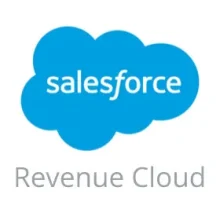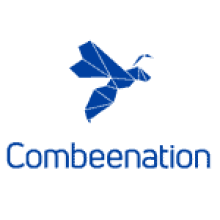Camos CPQ is a leading CPQ (configure, price, quote) software solution designed for B2B companies, particularly those in industries that deal with multi-variant engineer-to-order (ETO) products. This includes manufacturing, engineering, and technology. The platform streamlines the entire sales process by providing powerful tools for configuring products, calculating prices, and generating quotes. Camos CPQ helps businesses reduce errors, accelerate the sales cycle, and ensure consistent, accurate quotations, thereby improving overall sales efficiency and customer satisfaction.
One of the key differentiators of Camos CPQ is its robust set of features tailored to meet the needs of industries with intricate product configurations. The platform offers advanced capabilities like guided selling, 3D product visualization, and extensive discount options. It supports both cloud and on-premise deployments, ensuring flexibility and scalability. Additionally, Camos CPQ integrates seamlessly with leading CRM and ERP systems through standardized APIs, enabling end-to-end process automation from quote generation to order fulfillment. The software’s ability to handle complex dependencies, provide multi-language support, and facilitate mobile accessibility makes it an invaluable tool for sales teams aiming to enhance their productivity and deliver exceptional customer experiences.
Why this product is good
Positives of Camos CPQ Software
Product Details
What is Camos CPQ?
Camos CPQ is a highly sophisticated platform that combines configuration, pricing, and quoting capabilities to produce accurate sales quotes for complex products. It helps machine/plant engineers and other businesses with ETO products streamline sales by simplifying product configuration, calculating prices based on various factors, and generating quotes in minutes.
Its defining features include:
- Guided selling and needs analysis
- Budget quote in self-service
- Step-by-step configuration with free positions
- Plausibility and completeness checks
- Flexible pricing calculations
- No-code product modeling
- Green configuration
- Seamless integration with business systems
Guided selling and needs analysis: Targeted questions regarding the customer’s requirements give the system the ability to pick the ideal combination of components quickly. The configurator uses rules to determine suitable products, selectable options, and possible features. If a selection isn’t possible, it explains the reasons, allowing users to adjust their configurations.
Budget quote in self-service: After the guided needs’ analysis, interested prospects or customers will receive preliminary recommendations for appropriate product variants along with an estimated price presented as a budget offer. A seller can then finalize the configuration and quoted pricing in collaboration with the potential buyer.
Step-by-step configuration with free positions: Customers can create a complete configuration online with a few clicks or through detailed assistance from a sales representative, depending on the nature of the product in question. The AI-powered configurator adjusts the detail level based on the phase. Optional items and alternatives can be specified, allowing customers to select the variant that best meets their needs. Free positions (manually added quotation items) can be added at almost any point alongside the rules-based configuration, with approval workflows in place to ensure validity.
Plausibility and completeness checks: Product rules ensure that the configured variant is both technically feasible and functionally complete at all times. The system presents reasons for non-permissible configurations and suggested modifications each time there is a configuration error. Each step of the way, the prospect sees a 3D visualization of what they’re getting.
Flexible pricing calculations: The system can make calculations according to different price lists or based on a product’s manufacturing costs. With extensive discounting rules and options, sellers can discount individual items, entire item groups, or any combination of offers. If the seller makes a manual price adjustment, it calculates the discount at the individual level. Intercompany pricing can also be configured, including prices for different company sites and partners. At every level of configuration, the new subtotal is automatically calculated and shown, so buyers and sellers can see the impact of their selections on the overall cost. And, when a deal meets predefined criteria (e.g., a discount amount or projected deal size), approval workflows automatically route the quote to appropriate decision-makers for the final review. Businesses can offer products and services on a usage basis or for a defined period with regular billing.
No-code product modeling: Camos CPQ users create product models using an object-oriented modeling environment and a graphical UI designer. The system uses modular product structures to build and map each model. Beyond modular mapping, functional modules include AI-based rules and master data management. Camos also incorporates tools for designing user interfaces and result layouts, as well as tools for testing, translation, deployment, and version management. All these tools are designed to build the entire basis for a powerful configuration without any programming knowledge.
Green configuration: Camos CPQ stands out with its commitment to sustainability, offering features that promote ecologically sustainable product configurations. When selling to mechanical and plant engineers, the CPQ determines the product’s carbon footprint and reports it at the same time as the configuration. Not only does this make it easier for companies to fulfill their sustainability commitments, but it also helps customers understand the environmental impact of their purchases.
Seamless integration with business systems: Camos CPQ 365 acts as the digital bridge between customers and production teams. CRM (through Camos ConnectCRM), ERP (through Camos ConnectSAP), PLM, CAD, and BI integrations put the customer and individualized at the center of the sales process while distributing crucial information to the right teams. Thanks to integrations, businesses can sell products seamlessly through an online self-service solution or through the traditional B2B environment.
What are the advantages of using Camos?
Camos CPQ Benefits
For manufacturers and engineering companies, Camos CPQ offers several benefits.
- High interoperability and adaptability to customer-specific configuration requirements with an AI-based rules engine and room for free positions.
- Increased profitability through sales efficiency, price optimization, targeted upsells/cross-sells, and modularization (which reduces manufacturing costs)
- 100% pricing transparency improves the customer experience and helps buyers make informed decisions about their purchases
- Faster quote turnaround times and reduced error rates thanks to automation and integration with CRM, ERP, and CAD systems
- Sustainability through features like green configuration reporting and carbon footprint calculation
What industries are best suited for this solution?
Camos CPQ for Industries
Camos is CPQ software for manufacturers and engineering companies in various industries. For example, industrial equipment manufacturers can use Camos to configure and sell complex machinery with multiple options, variations, and add-ons. It helps manufacturers in the automotive industry create customized vehicles with various features and packages.
Here’s a look at some of the industries that can benefit from Camos CPQ:
Manufacturing
Advanced product configuration and 3D visualization: Camos CPQ excels in handling complex product configurations through its advanced configuration engine and 3D visualization capabilities. Manufacturers use these features to create detailed and accurate representations of their products, which can include numerous variations and customizations. The 3D visualization allows customers to see a realistic image of the configured product, which enhances the sales process by providing a clear understanding of the final product. This capability is especially valuable for industries like machinery, automotive parts, and industrial equipment, where precise customization is crucial.
Seamless integration with ERP and CRM: Camos CPQ integrates seamlessly with leading ERP and CRM systems through standardized APIs, facilitating end-to-end process automation. This feature allows manufacturers to streamline their entire sales and production workflow, from the initial quote to order fulfillment. By ensuring data consistency and reducing manual errors, this integration helps manufacturers manage their complex operations more efficiently.
Engineer-to-order calculations and custom pricing: The engineer-to-order (ETO) calculation capability of Camos CPQ is crucial for manufacturers who produce highly customized products based on specific customer requirements. It allows manufacturers to accurately calculate costs and prices for unique product configurations, ensuring that all custom elements are accounted for in the pricing. Camos CPQ also supports extensive discount options and intercompany pricing, enabling manufacturers to offer competitive and tailored pricing to different customers and market segments.
Engineering and Construction
Plausibility and completeness checks: Camos CPQ includes robust plausibility and completeness checks that ensure all product configurations are technically feasible and complete before a quote is generated. In the engineering and construction industry, where projects often involve intricate specifications and compliance with strict standards, these checks help prevent errors and omissions. This feature ensures that only viable configurations are proposed, reducing the risk of costly mistakes, rework, and noncompliance instances.
Customizable quotation layouts with multilingual support: The software offers highly customizable quotation layouts and multilingual support, allowing engineering and construction firms to create professional and region-specific quotes that meet their clients’ needs. This feature is valuable for companies operating in international markets or dealing with diverse client bases. Customizable layouts ensure that quotes are clear, detailed, and tailored to the client’s expectations, while multilingual support ensures that language barriers do not hinder the quoting process.
Mobile accessibility and remote configuration: Camos CPQ provides mobile device accessibility and remote configuration capabilities, enabling sales and engineering teams to create and modify quotes on-site or from remote locations. This feature is particularly beneficial for construction projects where team members are frequently on-site and need real-time access to configuration and quoting tools. By allowing remote access, Camos CPQ ensures that teams can respond quickly to client inquiries, make adjustments on the fly, and keep the project moving forward without delays. Flexibility and responsiveness are critical for maintaining project timelines and client satisfaction.
Electrical and Electronics
Role-based access and authorization: Companies can control who can view, modify, and approve various parts of the configuration and quoting process. In the electrical and electronics industry, where products often require collaboration among different departments (e.g., design, engineering, sales), this feature ensures that only authorized personnel can make changes, thereby maintaining the integrity and accuracy of the information. This controlled access is critical for managing sensitive information and ensuring that all configurations comply with company standards and regulatory requirements.
Simultaneous processing of comprehensive quotes: The software supports the simultaneous processing of comprehensive quotes across multiple locations, which is essential for global companies in the electrical and electronics industry. This feature enables different teams to work on the same quote in real time, ensuring consistency and collaboration. It reduces the time needed to generate complex quotes, which often involve multiple components and configurations. This capability enhances efficiency and ensures that clients receive accurate and timely quotes, even when teams are spread across different geographies.
Subscription pricing and management: Camos CPQ offers advanced subscription pricing and management features, allowing electrical and electronics companies to handle products and services sold on a subscription basis. The software helps manage different pricing tiers, billing cycles, and subscription renewals, ensuring that customers are billed accurately and on time. This is particularly useful for companies that offer software, maintenance services, or other recurring services as part of their product offerings.
Prices
Camos CPQ Pricing
Due to the intricate and customizable nature of Camos’s CPQ software, prices are only available on a quote basis. If you’re interested, you can request a quote directly from Camos via their website.
Is there anyone else out there?
Competitors and Alternatives to Camos CPQ
While Camos CPQ is an excellent choice for enterprise-level manufacturers, other solutions may better fit your quoting needs. It’s worth exploring these Camos alternatives depending on the type of products you sell, your production processes, and overall business needs.
Top Camos CPQ Alternatives
Pros CPQ
PROS CPQ is an ideal solution for B2B companies in manufacturing, wholesale, distribution, and those selling complex physical products. This platform automates sales teams’ quotation and pricing process, utilizing AI and machine learning to fuel powerful insights for enhanced sales execution and revenue growth. PROS handles extensive complexity, supporting up to 10,000 line items without impacting performance or speed. Among its distinguishing features is the 3D product configurator. In addition to its tools for the sales team, the 3D configurator integrates directly with websites, offering customers an interactive exploration of products online.
Epicor CPQ
Epicor CPQ is designed specifically for manufacturers and is known for its advanced visualization capabilities, including 3D and augmented reality (AR) product modeling. This feature allows customers to see a real-time visual representation of their configured products, which enhances the buying experience and reduces errors in the production process. Epicor CPQ also integrates with various ERP systems, facilitating a seamless transition from sales to manufacturing. The software supports complex product configurations and provides tools for dynamic pricing, making it an excellent choice for manufacturers looking to improve accuracy and efficiency in their sales processes. Choose Epicor CPQ if you need advanced visualization capabilities and/or dynamic pricing and require integration with your existing ERP system.
XaitCPQ
XaitCPQ offers an intuitive, no-code platform that allows businesses to create and manage complex product configurations without extensive technical expertise. It streamlines the quoting process by enabling real-time collaboration between sales teams and deal desks, automating approval workflows, and generating error-free pricing based on live business rules. With guided selling workflows, XaitCPQ helps sales reps upsell and cross-sell effectively, driving higher revenue. It also ensures compliance with configurable business rules and simplifies manufacturing by automatically generating Bills of Materials (BOMs), making it an efficient solution for organizations seeking to optimize their sales processes.
Infor CPQ
Infor CPQ is the CPQ arm of Infor CloudSuite CRM. Out of the box, it offers cross-integration support for numerous popular CRM, ERP, CAD, and eCommerce solutions and product specs, quote generation, order processing, and BOM creation. Manufacturers have various customization options to simplify the lead-to-order process, such as workflow automation, guided selling, and interactive 3D product catalogs.
Configit CPQ
Configit CPQ is a powerful alternative to Camos CPQ, especially for manufacturers managing complex products. Its standout feature, Virtual Tabulation® technology, pre-calculates all potential product configurations, ensuring fast, error-free quotes. This technology, combined with 3D visualization powered by Unity, allows sales teams to provide interactive product models that enhance customer understanding. Configit’s declarative modeling offers flexibility for creating customizable rules that ensure accurate, manufacturable configurations. The Solution Space feature helps visualize all possible product combinations, optimizing sales, inventory, and production planning. Additionally, seamless integration with systems like SAP, Salesforce, and Microsoft Dynamics ensures streamlined operations across teams.
Valuable Insight From Real Customers
Gartner Peer Insights
Camos CPQ has a rating of 3 out of 5 stars on Gartner Peer Insights. Users note that implementation can be difficult.
The reviewers and customer demographics are as follows:
Reviewer’s Company Size
- $50M-$1B: 100%
Reviewer’s Industry
- Manufacturing: 100%
Reviewer’s Deployment Region
- Europe, Middle East, and Africa: 100%
Gartner Peer Insights affirms that the configuration of Camos CPQ is very flexible and, once configured, is very helpful to salespeople.
FAQs
Common Questions and Answers
Camos CPQ streamlines and automates the entire quote generation process, reducing the time needed to create complex quotes. It also allows for real-time collaboration among different teams working on the same quote, improving efficiency and accuracy.
Camos CPQ integrates with various CRM systems through its ConnectCRM module. It also offers integration with various ERP systems, including SAP through ConnectSAP. Product lifecycle management (PLM), business intelligence (BI), and computer-aided design (CAD) integrations are also available via standardized APIs.

Andrew is a professional copywriter with expertise in creating content focused on business-to-business (B2B) software. He conducts research and produces articles that provide valuable insights and information to his readers.








